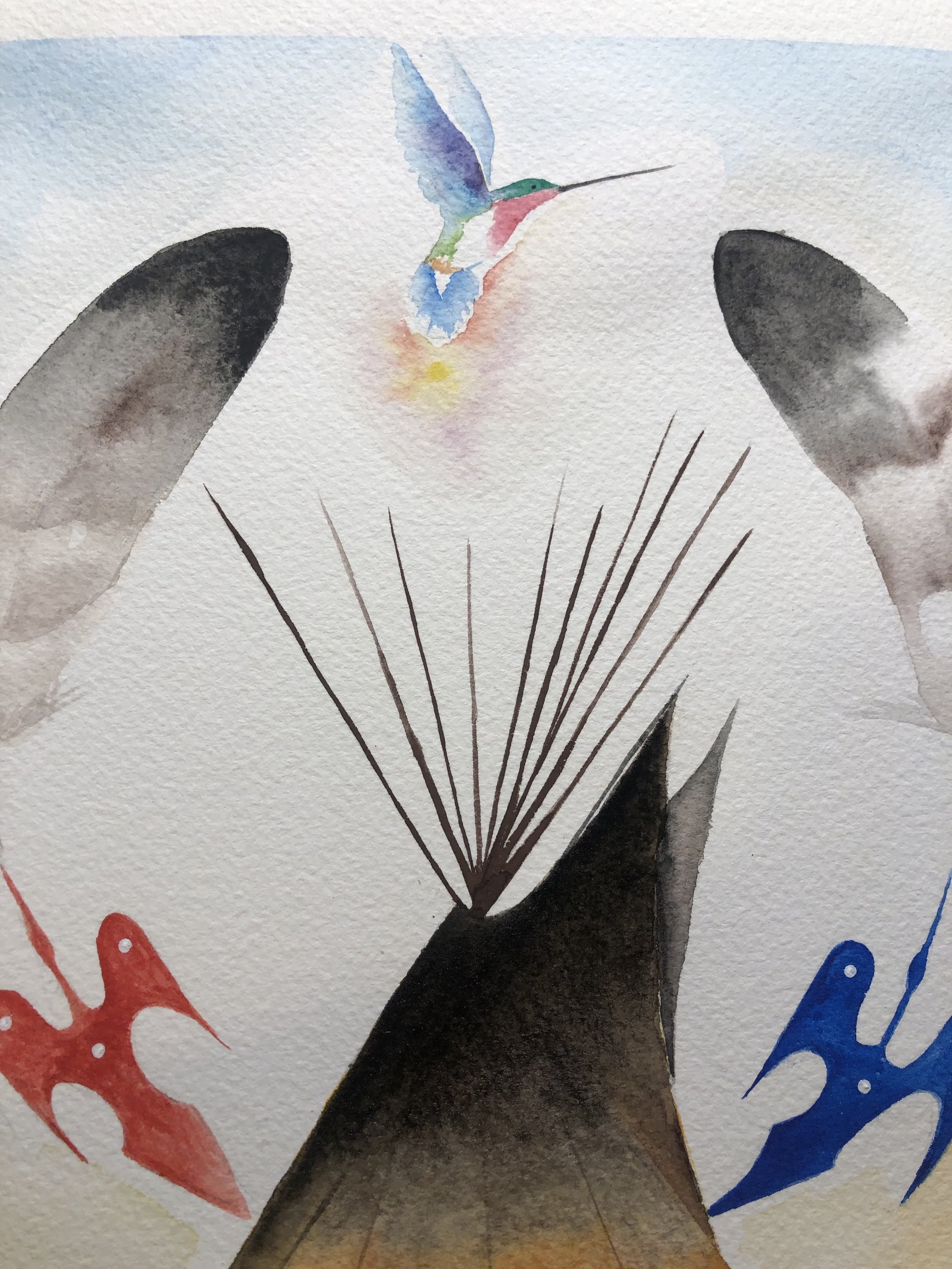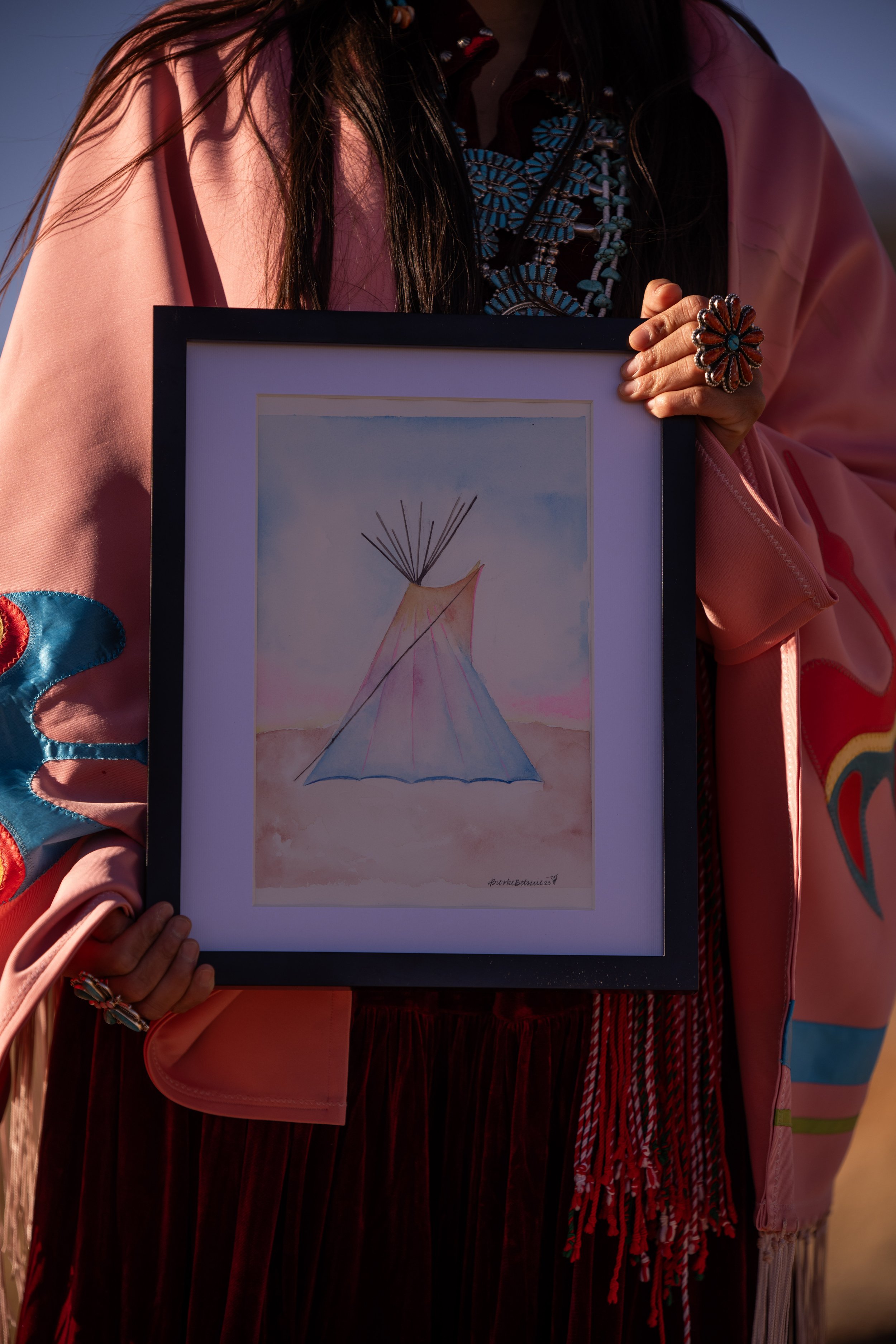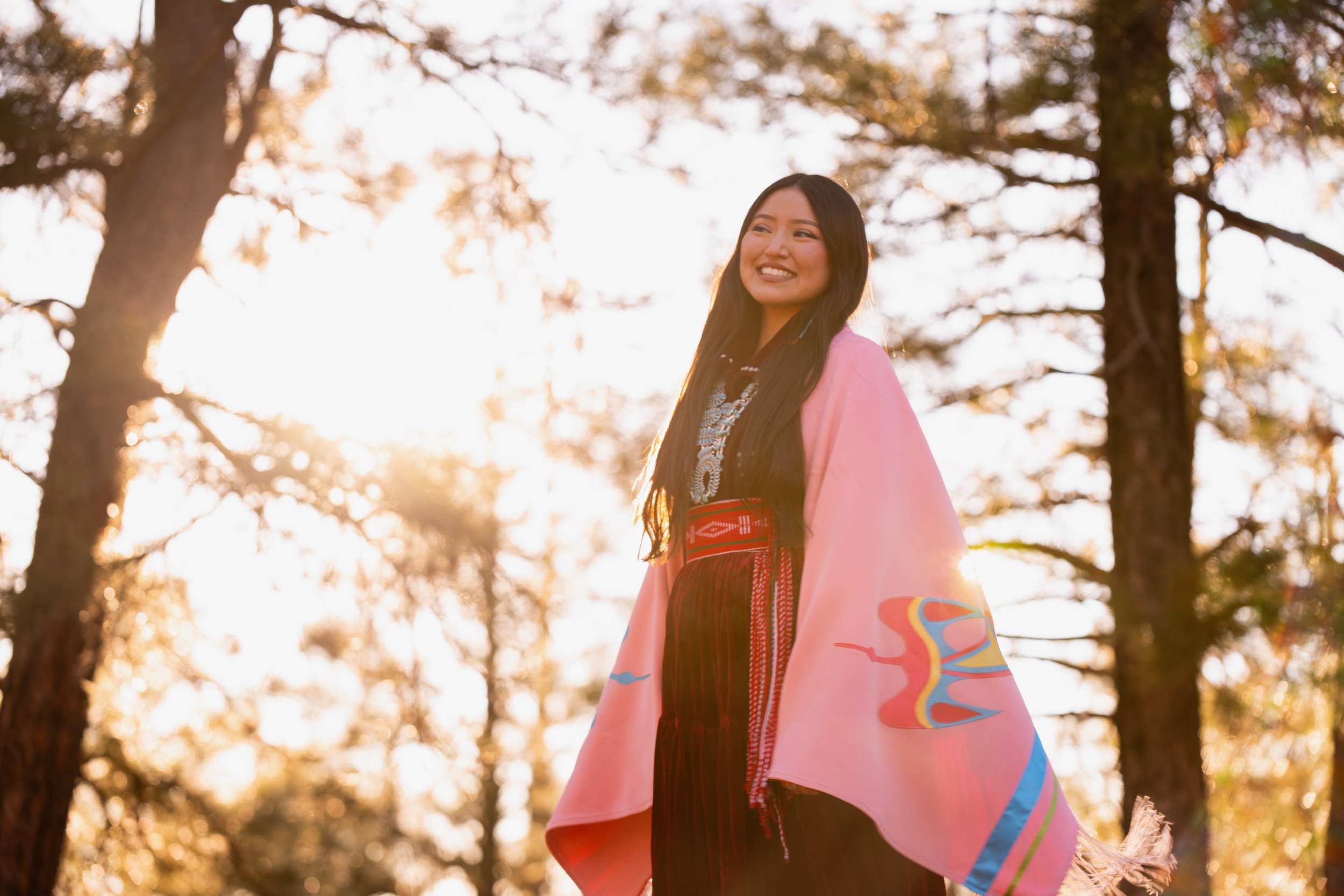Yá’át’ééh, shik’éí dóó shidine’é.Shí éí Brooke Betsuie yinishyé.
Naadáá Łigai Naasht'ézhi Tábąąhá nishłį́.
Kinłichii'nii bashishchiin.
Kinyaa'áanii dashicheii.
Tó'aheedlíinii dashinalí.
Tse’Łigai Deez’áhí déé’ naashá.
Ákót’éego diné asdzáán nishłį́.
About Strong Diné Asdzáán
Hello, my name is Brooke Betsuie.I am born for the Naasht'ézhi Tábąąhá (Zuni Edge Water) people, my mother’s first clan.
My second clan is the Kinłichii'nii (Red House) people, my father’s first clan.
As for my third clan, I am born for the Kinyaa'áanii (Towering House people, my maternal grandfather’s clan
and my last clan is the Tó'aheedlíinii (Running Into the Water) people, my paternal grandfather’s clan.
I come from an area in the Western Navajo Nation called
Tse’Łigai Deez’áhí, White Mesa,
and these white rocks and mesas
are where traditionally my Zuni Edge Water clan
has come from for many generations and where my true roots are.
As a Navajo woman, I was taught to introduce myself using my four clans
as this is the essence of Navajo identity and kinship.
As a Naadáá Łigai Naasht'ézhi Tábąąhá woman,
I was taught that our clan has keen artistic talent
and we thrive using our creativity.
It is my privilege to introduce myself in this way and to be able to
call myself a Diné artist.

Finding Strength in Creativity
Art as Resilience: A Journey of Healing and Identity
For Brooke, art has always been more than an activity, it has been a source of solace, healing, and a platform for women to remember home. Growing up in a traditional Diné household, she was surrounded by ceremonies that became her sanctuary, a place where she felt the deepest connection to the fireplace. It is in the fireplace, where our old ones are. "In these spaces, I found the most tranquility and inspiration; this is how it felt to create and to be able to use my mind to interpret beauty and Hozhó," she reflects.
From a young age, Brooke often felt isolated in predominantly white schools, where she experienced racism and microaggressions that shaped her journey of resilience. Without many resources or support systems, she turned inward, finding comfort in her sketchbooks and paintbrushes. Art became her voice, a way to process the challenges she faced and to reclaim the strength as a Navajo Woman.
Her work is deeply personal, capturing the strength, beauty, and spirituality of Diné women. She draws inspiration from her own lived experiences, traditional stories, and prayers, allowing her art to serve as a bridge between the past and present. Whether depicting moments of prayer, the presence of sacred animals like horses and hummingbirds, or the serenity of ceremonies, Brooke’s creations embody the essence of Diné .
Beyond personal expression, Brooke sees art as an act of resistance and empowerment. "As Indigenous people, we have always been artists, singers, dancers, storytellers, and creatives. Once I realized this, I saw art as a mechanism to reclaim those practices, like how we reclaim our languages, land, songs, and prayers." Through her work, she not only preserves the stories of her people but also uplifts and inspires future generations to embrace their creativity, identity, and paased down traditions.
Hózhó Through Art
Take a minute to read Brooke talk about the Diné Philosophy of Są’áh Naagháí Bik'eh Hózhóó (SNBH)

Walking in Two Worlds
“I balance these worlds in a way that makes sense to me and also speaks to the hearts of other Navajo women navigating higher education.”
— Brooke
Her words
-
Being a Diné aszdáán in today’s society is a challenge as you are left to walk in two worlds, the Diné way of life and the Western way. Being able to conform to the Western society, feels like a betrayal to our Diné roots and tradition. However, the act of conformity is a necessity in order to succeed in the Western, capitalistic world. I use my art to find a balance between these differing worlds. Often, I draw traditional Navajo women studying on the computer or studying with a kerosene lamp flickering in the background with the rez stars shining in the back. I balance these worlds in a way that makes sense to me and also speaks to the hearts of other Navajo women navigating higher education. I also draw upon the experiences my mother has shared with me as she has paved the way for my sister and me, becoming the first clinician in our family and being a first-generation student. Her experience of being in STEM classes understanding the human body while also recognizing her traditional Diné roots was difficult and humbling. Through my art, I am also able to convey the importance of relationality and connections between family, community, and the land and animals. For me, this is part of my healing journey as I slowlybetter understand myself and my thoughts.
-
As I share my art, I hope to convey the message to other Navajo and Indigenous women that we are strong, spiritual, and divine. I want to be able to encourage women from all walks of life to keep pushing through barriers within their lives, whether that’s educational, career-wise, or personally. I want to convey to women that they are not alone as we have a connection to all aspects of life and as Diné women, we always have our shadow that stays with us throughout our journey on this Earth.
-
My art serves as a foundation for my identity and purpose in life and helps me keep my peace and faith close to my heart through difficult times. I want to be able to provide women with this message, whether that is spoken or unspoken.
Strong Diné Asdzáán’s vision
As a Masters of Public Health student and a Diné asdzáán navigating higher education, I have faced, and still facing, the struggles of imposter syndrome and understanding my role in my chosen educational and career field. Throughout my program, I was oftentimes away from home and ceremonial gatherings, which sparked my interest to create drawings and paintings that reflected my times in ceremonies and my relationship with the fireplace and Dííyín Diné’é. These paintings and drawings often brought a sense of comfort to other students also going through similar experiences.
As I continued learning the fundamentals and complexities of public health with an Indigenous health focus, I began to realize how I could integrate my artistic capabilities into my work to create meaningful change for Indigenous communities. Oftentimes, public health is viewed through a Western perspective addressing theories, implementation, and evaluation.
However, my education revealed the vast similarities between the values of public health to the values of Indigenous people. During my work and schooling, I slowly started to integrate my creative expressions to further exemplify cultural healing, prevention, and community well-being. Although art is seen as a visual depiction, I used my creative energy to create programs centered in Indigenous values as well as draw upon interventions that also integrate Indigenous traditional ways of life and expression into their programs, such as song, prayer, and traditional arts.
When addressing public health efforts for Indigenous communities, cultural competency, and culturally-centered efforts must be prioritized. Through the incorporation of artwork, I can speak to the cultural components of Navajo communities to ensure positive health outcomes and understanding within these communities. For Indigenous people, we are naturally creative and seek deep meaning in art, as specific symbols reflect our stories, songs, and ceremonies.
In the future of my public health career, I hope to leverage my art to reflect cultural teachings and philosophies to create healthy outcomes as well as create programs centered on language and culture revitalization. I also would like to utilize my expressions to be able to bring healing to communities in a way that is relevant and respectful, while also understanding the values of privacy and gatekeeping of our sacred practices.









